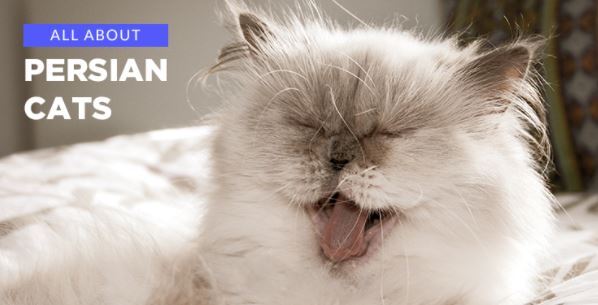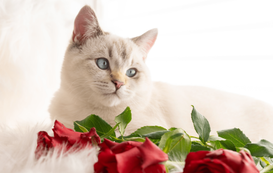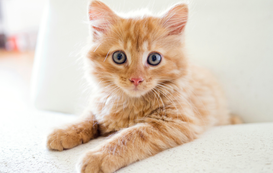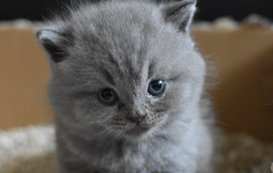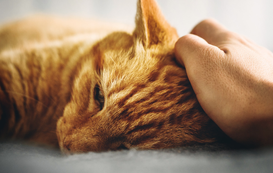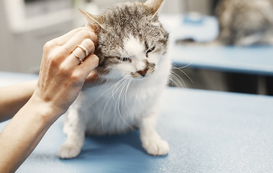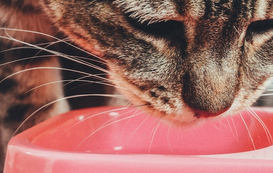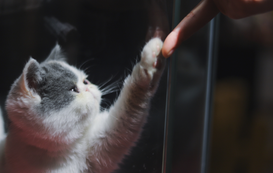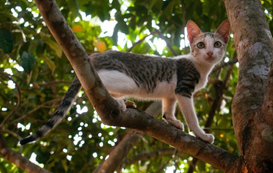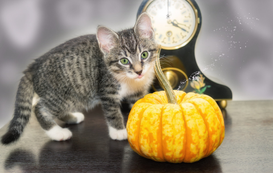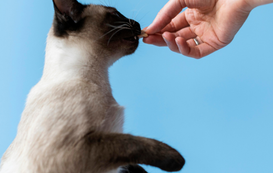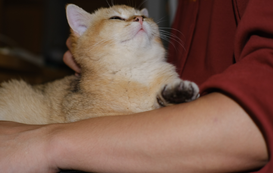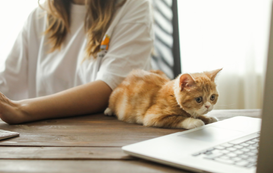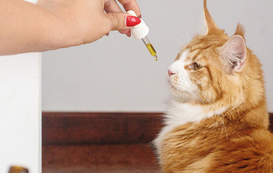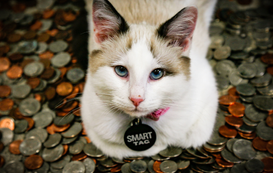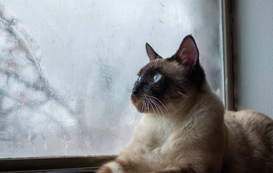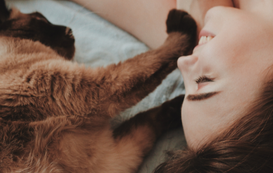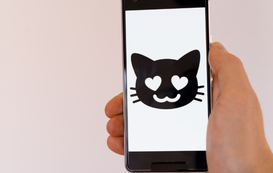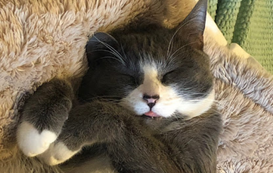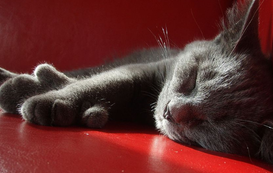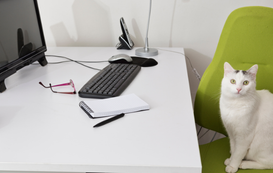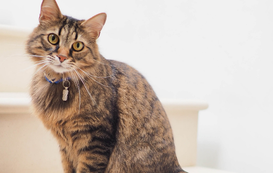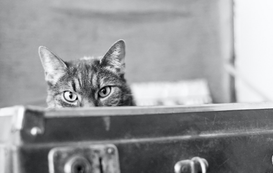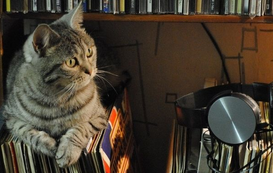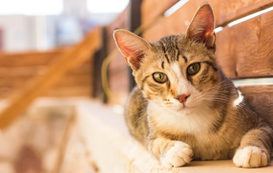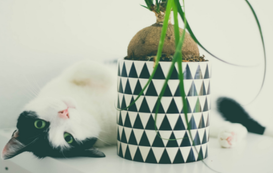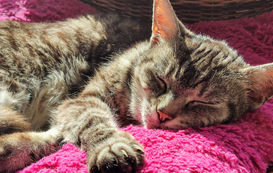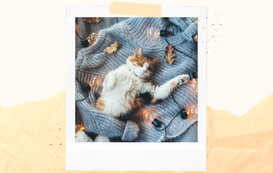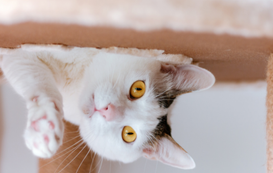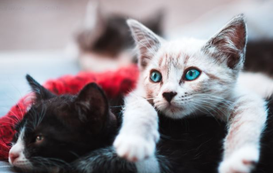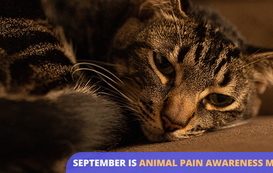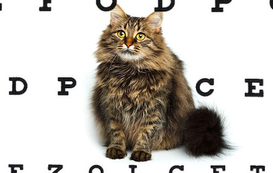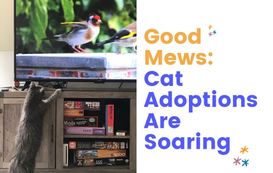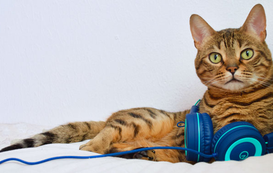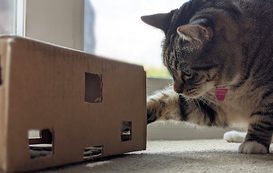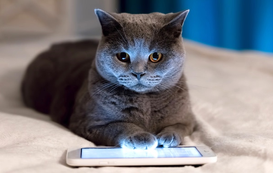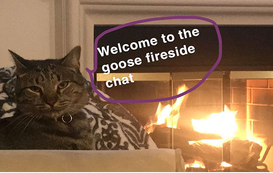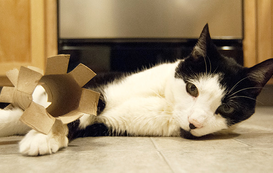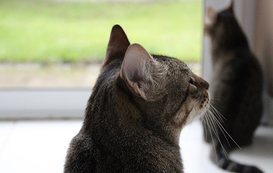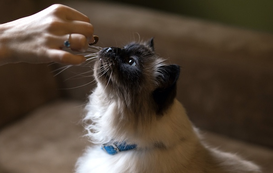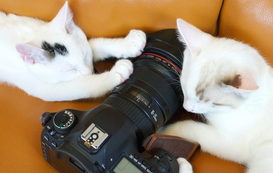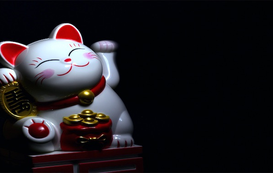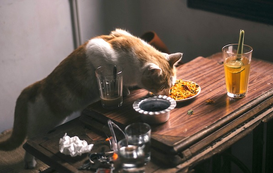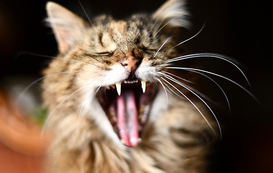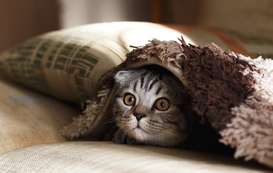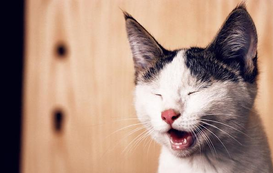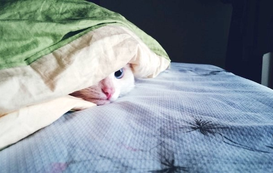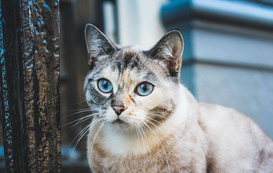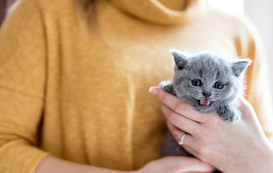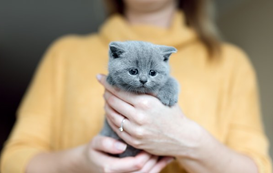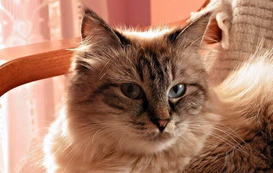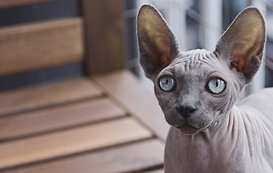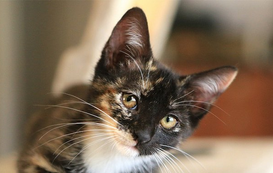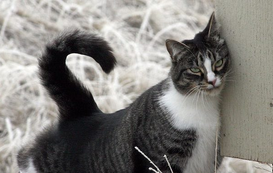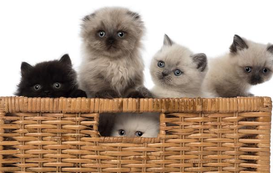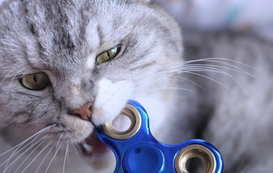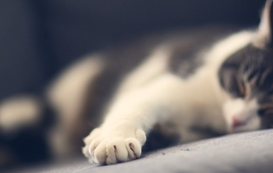Persian Cat: History, Care, and our celeb Persian cat favorites
Sweet, gentle, and irresistibly fluffy, Persian cats are one of the most beloved breeds in the world. According to the Cat Fanciers’ Association, in 2019 the Persian cat was ranked first place as the most popular breed in the U.S. and fourth worldwide.
The Persian cat is universally recognized for its signature long fur and flat muzzle, as well as its affectionate purrsonality. If you’re thinking about bringing home a Persian furball or just curious, read on to learn all about the Persian cat breed!
Persian Cat Breed History
As the name suggests, the first ancestors of the Persian cat can be traced back to the historical region of Persia (located in modern-day Iran) in around 1620. There seems to be some mystery around the origins of the breed though, as earlier records reference Persian cats in Egyptian hieroglyphics.
The Persian cat was first imported from Iran into Italy and from Turkey into France, where they quickly grew popular among cat enthusiasts and breeders of the time. Soon after these exotic felines took Europe by storm. In 1871, longhaired cats even participated in the first-ever cat show at the Crystal Palace in London.
The Persian cat breed made its way into the U.S. in the late 19th century and instantly attracted the eyes of the masses. It was even one of the first breeds ever recognized by the Cat Fanciers’ Association – the world’s largest registry of pedigreed cats – when it was first established in 1906.
Nowadays, there’s a distinction between the “Traditional Persian” and the Persian cat as we know it, which is called “Peke-Faced”. The “Traditional Persian” refers to the original appearance of the breed, which doesn’t include the shortened nose. The flat muzzle is the result of a genetic mutation and became part of the breed’s features only after years of selective breeding.
Characteristics of Persian Cat
Persian cats are stunning and have a sweet, calm temperament. But they also require extensive grooming (hey, that glorious coat isn’t going to brush itself).
Physical features
According to the International Cat Association (TICA), the Persian is a medium to large cat, weighing 7-12 pounds. They have broad and muscular bodies with short legs and a short tail. Persian cats have a round head, small ears, and huge, expressive eyes. They’re also said to have a soft and even musical voice!
Persian cats have extreme features: the face is open and pansy-like, while the nose is shortened. From the side, it vertically aligns with the forehead and chin. However, in the case of the “Traditional Persian” the muzzle is protruding.
Another distinct feature of the Persian is, of course, that luxurious fur. Persian coats are long, thick, and silky or cotton-like in texture. They also come in a rainbow of colors! According to the Cat Fanciers’ Association, there are seven subdivisions: Solid, Silver & Golden, Smoke & Shaded, Tabby, Parti-color, Bicolor, and Himalayan.
When it comes to life expectancy, these fluffy beauties live up to 10-17 years, so you’ll enjoy many happy moments with your Persian purrbaby.
Personality overview
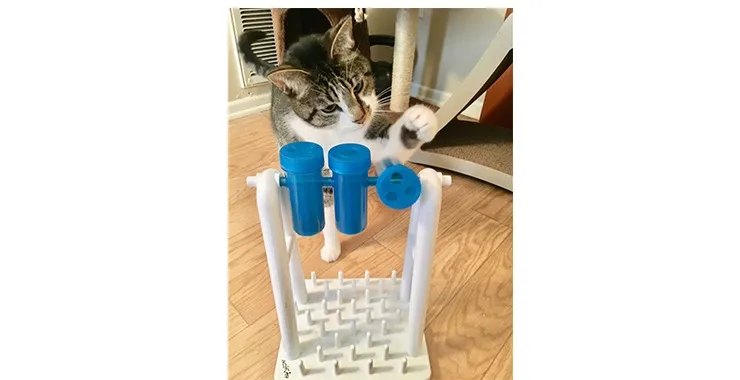
Every cat has its own purrsonality regardless of breed, but most Persian cats are known for being loving and serene. They enjoy a quiet environment where they can lounge on the floor or drape themselves over the couch. The Persian cat prefers easily accessible surfaces, rather than high spots such as the top of the fridge.
Persian cats also love to sleep on their human’s lap and enjoy a gentle petting session. They’re quite social, but not with just about anyone! Their affection is usually reserved for their owners and trusted guests. These fluffballs are also great with children, as long as they remain calm around them.
Beware: The Persian cat is a high maintenance breed, mainly due to the volume of its fur. They’re also associated with several hereditary health issues (more on that below). Lastly, they’re not very energetic, so owners should invest extra effort into their Persian’s weight management.
Persian Cat Care and Health
How to care for your Persian cat
#1 Brushing
As you can imagine, grooming will be the biggest part of your Persian cat’s care routine. Brush your majestic furball daily to prevent tangles and mats. Combing can reduce shedding, though it won’t eliminate it. Oh well, who said cat hair can’t be cute house décor?
#2 Cleaning
Debris – such as sand from the litter box – can also get trapped in your Persian’s sanitary area and paws. Take time to inspect their body every day. If your Persian is particularly adventurous, it might need monthly baths as well.
Teary eyes and nasal drainage is common in Peke-faced Persians, so wipe those spots daily. You’ll also need to keep your place air-conditioned, especially during the warmer months, because Persian kitties are sensitive to heat.
#3 Weight management
Persians are low-energy cats, so you should control their nutrition and encourage playtime. Feline obesity is much more common than we think and can significantly reduce your furball’s lifespan. Stimulate your kitty’s curiosity and get it to move around for at least 30 minutes every day. If you’re dealing with overeating, a good tip is to avoid free-feeding.
Common health issues in Persian cats
As is the case with most pedigreed felines, the Persian cat is prone to a number of genetic health problems, mainly due to the structure of its head.
Hereditary polycystic kidney disease (PKD) is extremely common in Persian cats; nearly 40% of them have it. Cats with this illness form tiny, liquid-filled cysts on their kidney tissue that grow over time. An Associate Professor at Cornell University’s College of Veterinary Medicine explains that “it’s possible for the sacs to become so large and numerous that you can actually see the kidney’s outline when an affected cat is lying on its back.”
Feline Hypertrophic Cardiomyopathy (HCM) is also prevalent in Persian cats. The condition occurs due to abnormal thickening of the heart muscle, which prevents normal blood flow. HCM is the most common cardiac disease in cats and can even cause sudden death. Although we don’t know what causes HCM, experts suggest that genetics could be involved.
Progressive retinal atrophy (PRA) is a group of degenerative diseases that affect the eyes and is common in the Persian cat breed. In this disease, the retinal cells (called photoreceptors) deteriorate rapidly and cats can become blind in both eyes by the time they reach 15 weeks old. Unfortunately, there’s currently no permanent treatment for PRA.
Respiratory problems are also pervasive in the breed. Because their noses are so short, breathing can be loud and difficult for Persian cats.
Tip: Beware of breeders who claim their Persian cats have no health issues!
Who should own a Persian cat?
The Persian cat is famous for its lovely purrsonality, so it should be a good fit for most cat-lovers. Having said that, there are a few points to consider before you bring a Persian fluffball into your furever home.
As a Persian kitty parent, you’ll have to:
- Thoroughly comb and clean its fur every day
- Play with it for at least 30 minutes a day and control their diet
- Shoulder any possible vet appointments or other medical expenses
- Keep your place breezy and cool
Lastly, Persian cats can cost a pretty penny! Most breeders charge anywhere from $600 to $1800 for one of these beautiful felines. Of course, there’s always the cheaper option of adopting a Persian cat, which usually costs about $75-$100.
Celeb Persian cat favorites
With their unique smooshed faces and thick fuzzy coats, it’s no wonder Persian cats are adored by famous personalities or even attain celebrity-status themselves!
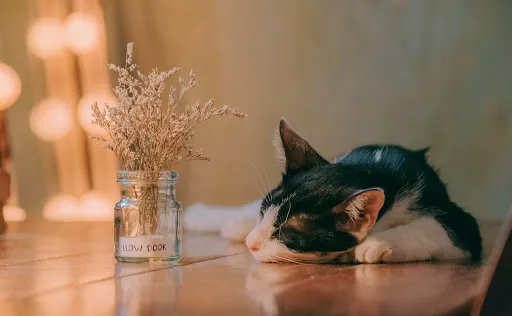
Martha Stewart is known to own multiple Persian kitties, including two calico siblings named Empress Tang & Princess Peony. Simply meowvelous!

Who can forget Mr. Tinkles, the devious antagonist in the “Cats & Dogs” movies? This Persian ball of floof might look innocent and docile, but he’s actually an evil mastermind in the movie, who’s planning world domination.
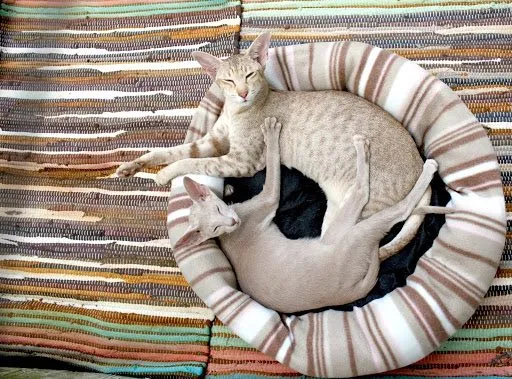
Another feline villain in cinema is Snowbell from the 1999 movie “Stuart Little”, who’s played by a white Persian named Lucky Prince. In the beginning of the movie, Snowbell is a self-absorbed meanie, but eventually shows his soft side, which is closer to the true personality of his breed
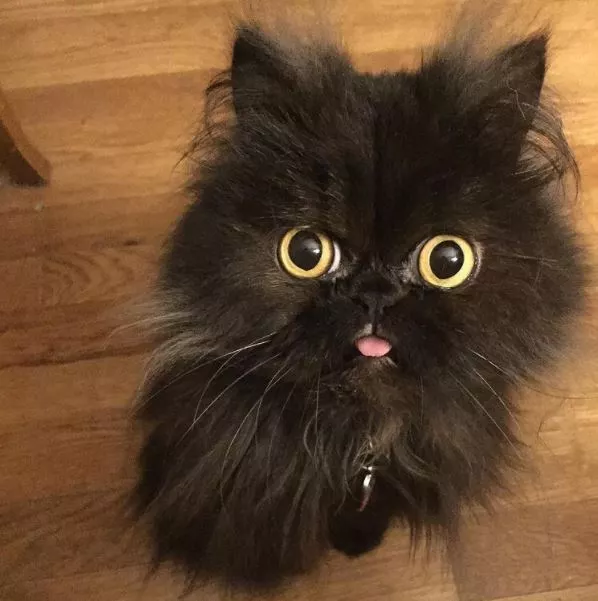
Wait, this isn’t a stuffed animal? Nope, it’s October The Cat! She has over 110K Instagram paw-llowers, and is famous for her cartoony yellow eyes, fluffy black coat, and adorable bleps. She might as well be the definition of the term “furball”!
Wrapping Up
The world has been mesmerized by Persian cats since Ancient times and they remain one of the most popular breeds in the world. With its soft, long coat and gentle temperament, the Persian cat makes for the purrfect feline companion. That is if you don’t mind daily grooming and extra playtime!
Meowtel Cat Sitters are dedicated to bringing the purrfect hospitality to you and will make sure to adjust their care to your purbaby’s needs.

